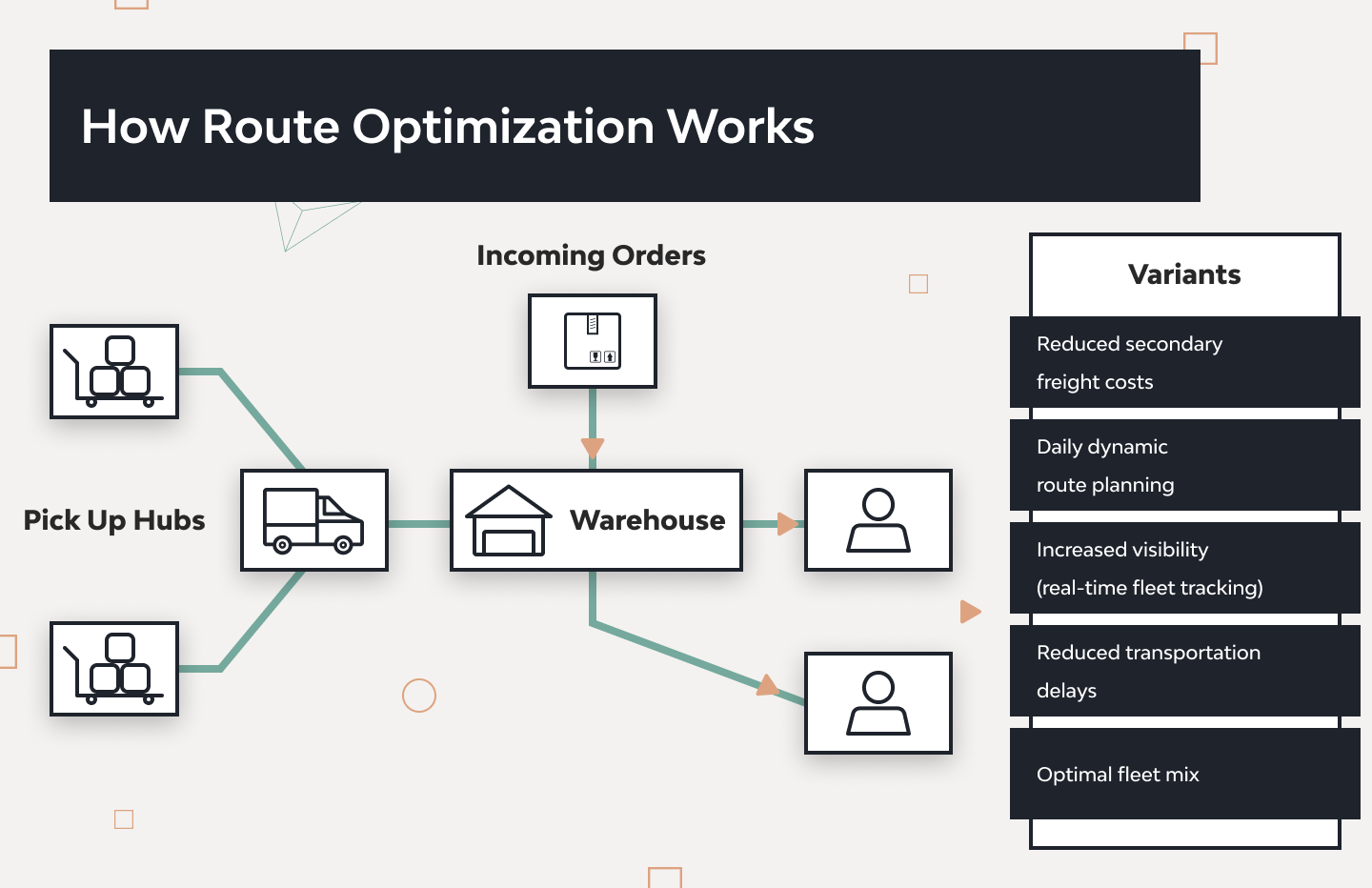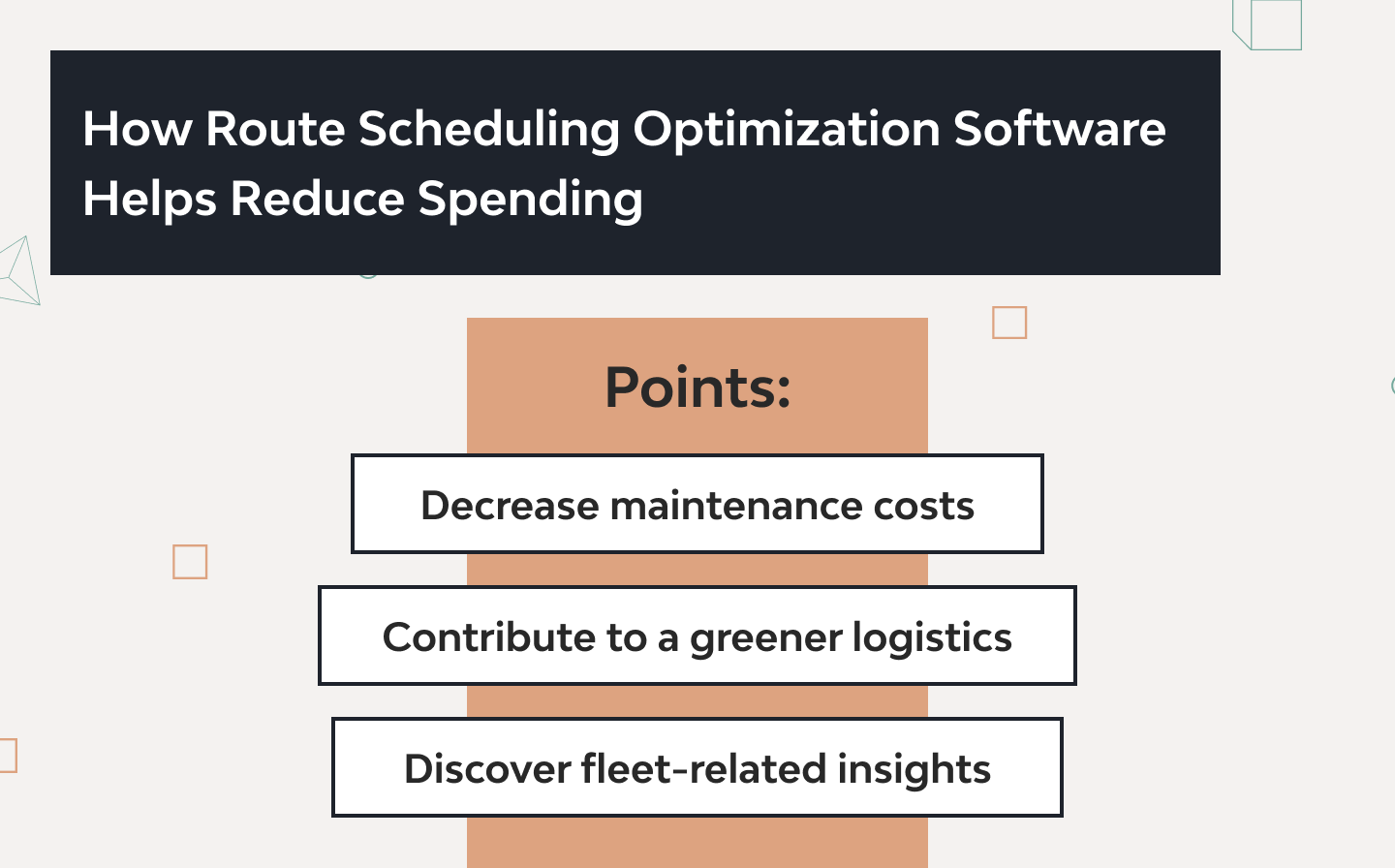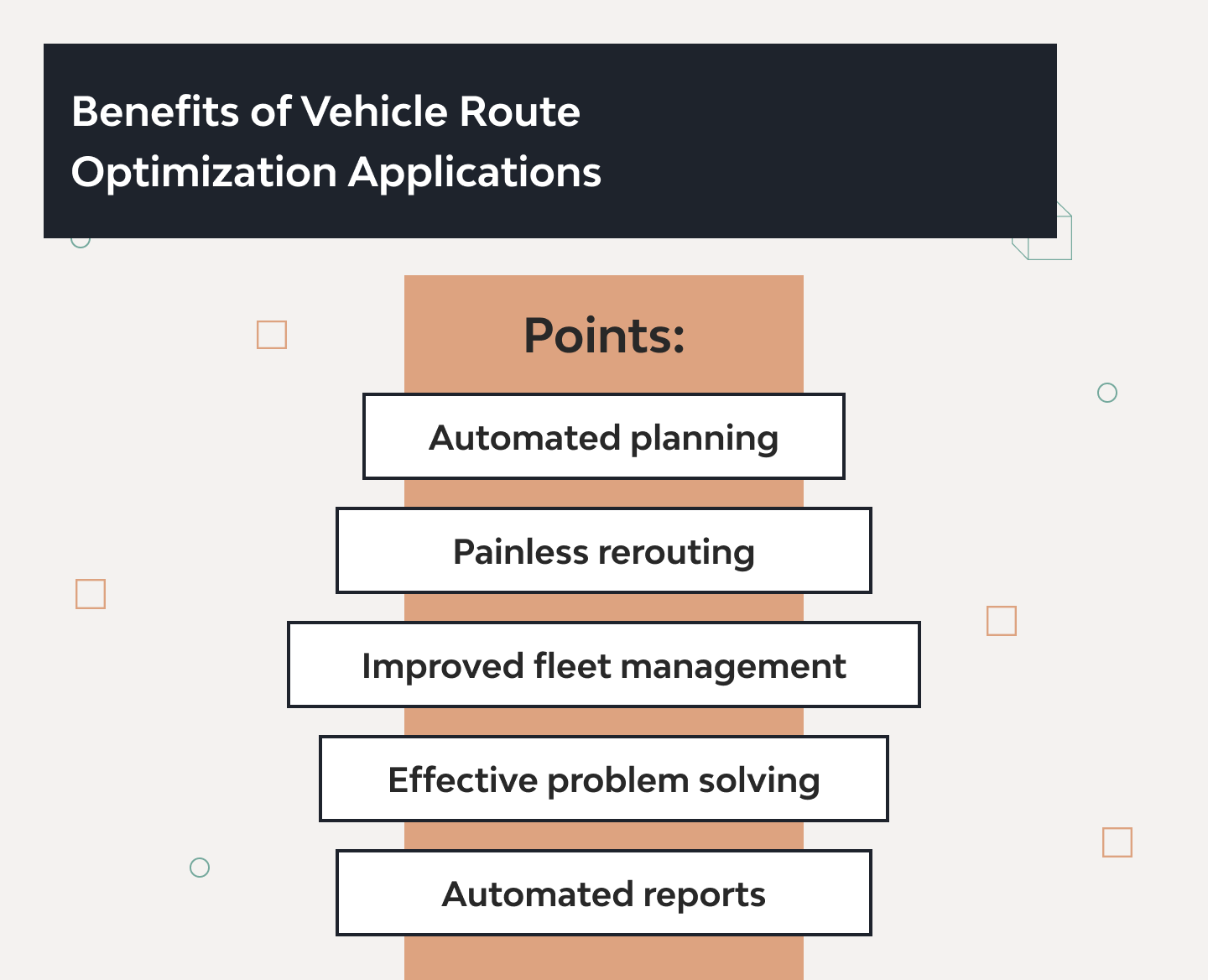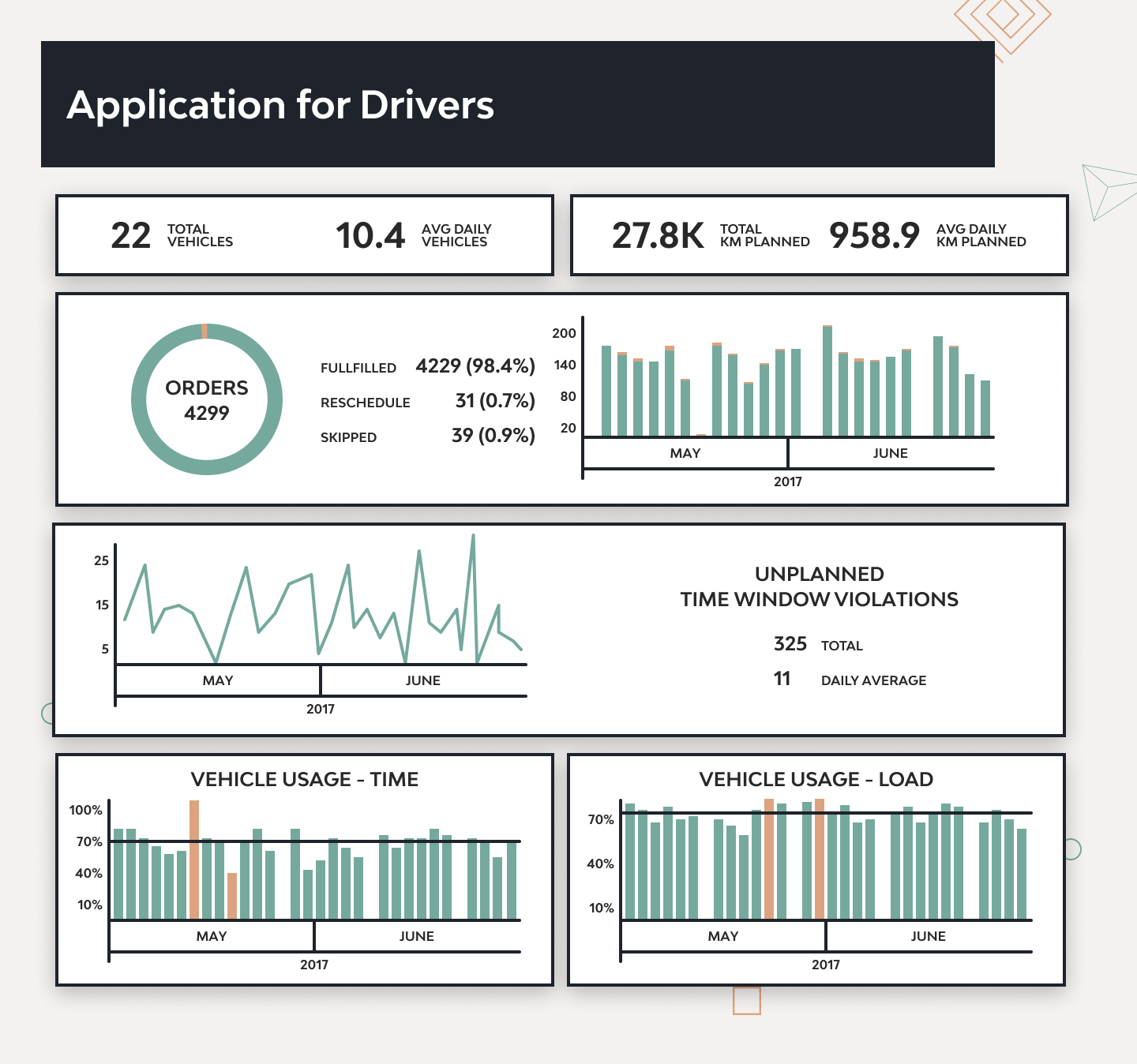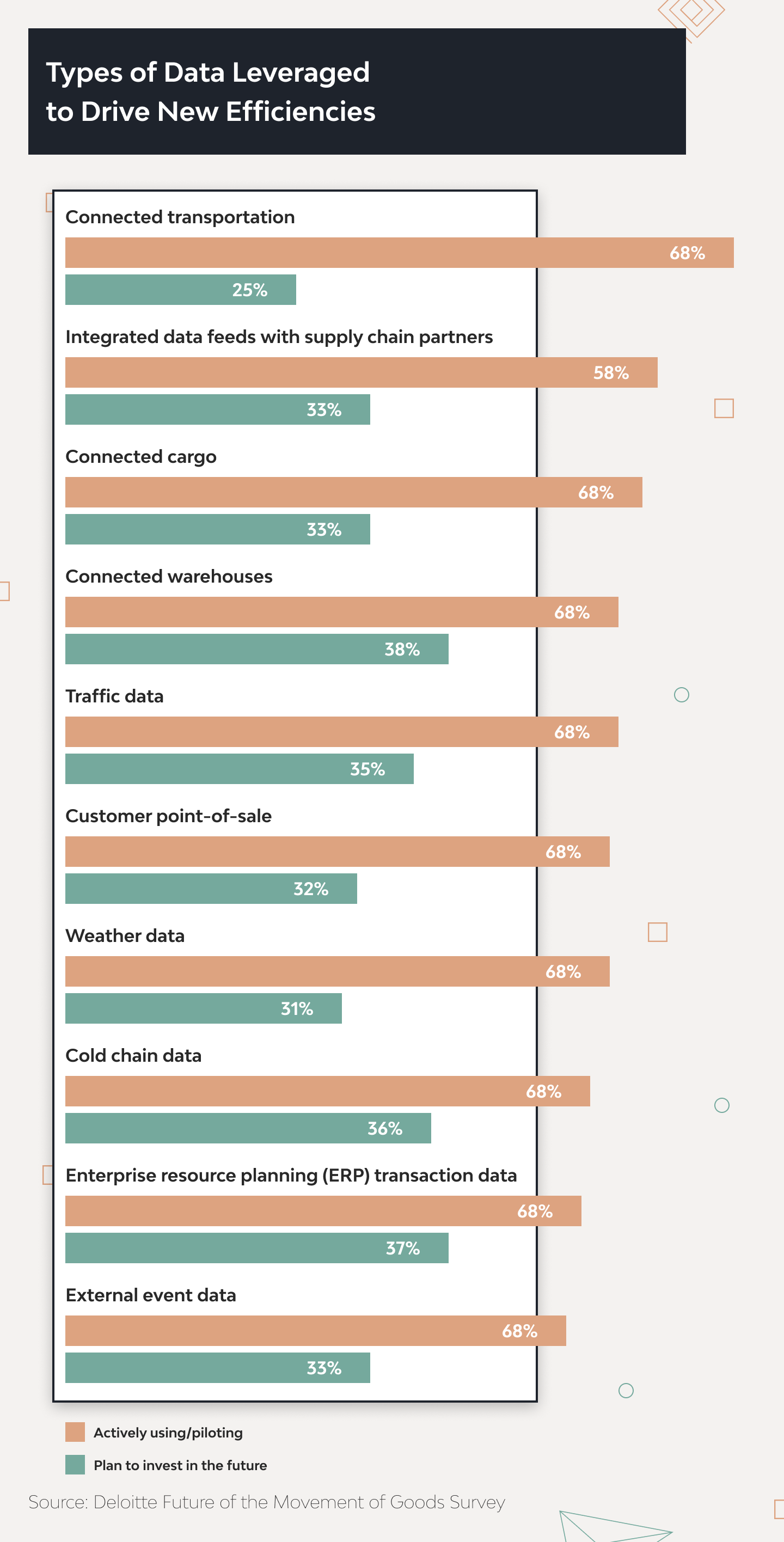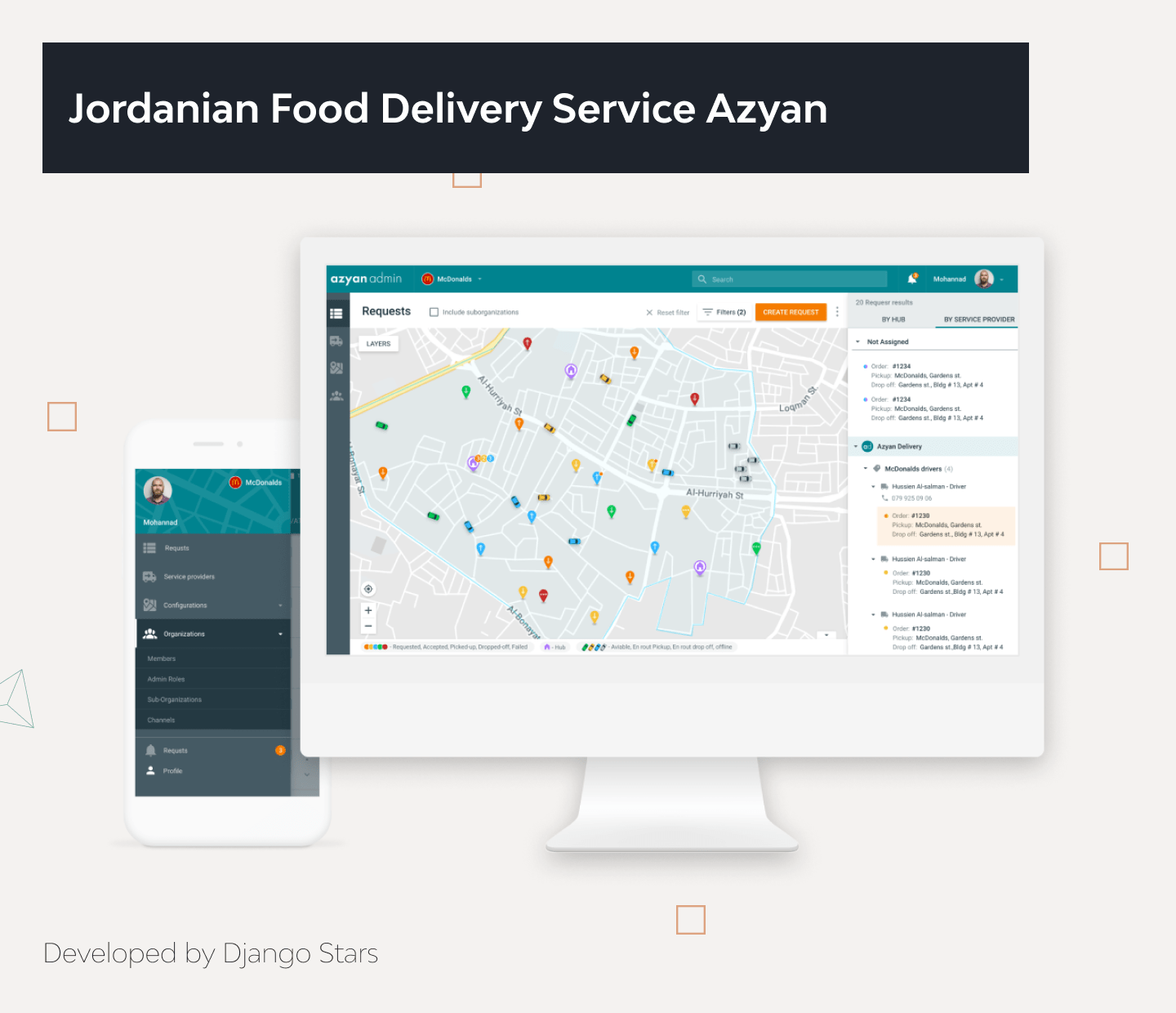Route Optimization Software: A Complete Guide to Development and Integration

As diesel prices rise and service demand gets sharper by the day, businesses must invest more in their logistics, both budget- and tech-wise. In 2025, 52% of US-based transport and shipping firms must spend up to 20% of their monthly operating budget just on fuel.
In total, business logistics costs reached $2.6 trillion, making up nearly 8.7% of US GDP. To keep up, shipment contractors, providers, and suppliers need synchronization, visibility, and efficiency boost in logistics processes.
Route optimization software minimizes operational load and budget through automation, data insights, and smart suggestions. A tailored vehicle routing tool gives businesses a firm grip on delivery statistics, road conditions, and drivers’ performance.
This article further explains how route optimization and last mile delivery software saves your company’s time, mileage, and resources, as well as how it’s built and what essential features it usually packs.
What is Route Optimization Software and How Does It Work?
Route optimization software defines a range of solutions, tools, and technologies that help boost the efficiency of routing by replacing manual tasks and processes. It can be used to automate certain delivery stages and set up a more insightful service route selection for fleets.
For this, the route optimization software can analyze addresses, time windows, vehicle capacity, traffic data, and driver schedules. Smart algorithms help compute routes that save time, fuel, and drivers’ health.
What is route optimization software good for other than routing? With custom tools, dispatchers can pin traffic or weather hazards, immediately adjust deliveries, and warn drivers. Fewer miles driven and quicker shipments result in lower operating costs, while safer employees are priceless.
Key Aspects of Route Optimization Software Development
Route optimization software development is unique for every other case, but the essential aspects of the process include the following.
Algorithms
Route optimization software is powered by algorithms, which compute optimal sequences of stops, analyze time windows, and minimize shipment distance. The most common algorithms used for routing are heuristics, metaheuristics, Dijkstra, genetic, and vehicle-routing problem solvers.
Mobile applications
To assign tasks for the fleet, monitor and assist drivers, and make dispatch updates, you need driver-side apps. With a custom Android or iOS app, field teams can be managed and navigated online, while the drivers themselves get in-app offline maps, guidance, and real-time feedback during delivery.
System integration
Another essential part of routing software is the integration with GPS and telematics, mapping data providers, weather or traffic APIs, as well as order management, TMS, and warehouse management systems.
Real-time data
With the help of data APIs and reliable sources of content, a new solution gets a live feed on traffic, weather, road closures, delivery changes, vehicle locations and other details that can help optimize routes on the fly.
Key Benefits of Route Optimization Software
Last-mile delivery, logistics, and fleet route optimization software can help mitigate persisting workflow and management issues, as well as boost efficiency across the board. Here’s how.
Cost reduction
One of the core benefits of route optimization softwarе is that it balances out operating expenses. By eliminating empty miles, fuel waste, and overtime, companies can achieve major cost cuts. More budget can also be saved thanks to constant monitoring of vehicle parts — less component wear and balanced maintenance frequency result in fewer repairs.
Increased efficiency
Today’s fleet drivers must keep up with schedules, balance loads, and deal with dynamic traffic. With route optimization software for delivery planning, the drivers get tools for calendar-based scheduling, load capacity analysis, and real-time rerouting signals. Fleet employees can complete more stops in less time, making more deliveries with fewer delays.
Enhanced customer service
To keep customers satisfied, one’s deliveries must be accurate, on-time, and reliable. By using route optimization softwarе, businesses can provide more insightful estimates for customers, respond faster when things change, and reduce late deliveries. Satisfied customers return and help maintain not only the budget but also the reputation, too.
Environmental benefits
Fewer miles spent, less driver idling, and minimized redundant trips result in one of the top relevant benefits of route optimization software — lower emissions and greener operation. Route optimization helps fleets set and meet new sustainability goals as they gradually reduce their carbon footprint and boost eco-friendliness and regulatory compliance.
Scalability
Good route optimization software is scalable — this is fundamental for long-term adoption of tools as the company’s delivery networks grow. The scaling of such software may entail adding more stops, more vehicles, more constraints (time windows and capacity) to the system. Quality software must support growing fleets without proportional cost or complexity.
Essential Features of Fleet Route Optimization Software
Here are the must-have route optimization software features that a capable solution should have.
Dynamic routing algorithms
Core algorithms constantly evaluate routes using various data and monitoring inputs, e.g., on current traffic, time of day, and road closures. When conditions change, e.g., congestion happens, routes are recalculated automatically to minimize delays and cut drive time.
GPS tracking
Real-time GPS tracking allows operators to see and track vehicle locations, progress, and route adherence. Fleet managers can monitor delays or deviations, dispatch corrective instructions, and measure real-time data, like idling and speed of route completion.
Automated dispatching
Jobs or orders can be assigned to drivers or vehicles autonomously, based on factors like location, shift timing, capacity, and delivery urgency. E.g., a routing system can use custom sets of rules and real-time info to select the best drivers or vehicles for routes automatically.
Automated customer notifications
Customers must be updated about any route progress or changes. Route optimization software can generate SMS, email, or in-app updates, keeping the customers in tune with arrival times, delays, or changed drop times.
Integration capabilities
Thanks to custom integrations, your route optimization software can synchronize order management tools with TMS and WMS features, mapping and traffic data sources, GPS and telematics, inventory, and more.
Proof of delivery (ePOD)
No need for paper records — having ePOD integrated in a fleet route optimization softwarе allows drivers to capture confirmation of delivery with digital signature, photo, GPS time-stamp, and sometimes ambient conditions or notes.
Mobility
A mobile app for drivers provides access to route plans, navigation, record POD, and route changes. It also bridges the gap between truckers and their operators and managers, ensuring smooth field execution of office plans and delivery projections.
User interface design
Dashboards for dispatchers and mobile apps for drivers enable simple, on-demand access to route maps, upcoming stops, status updates, alerts, etc. Clean, intuitive, and responsive UI makes it simpler for dispatchers to act and react without overloading other employees.
Reporting and analytics
After or during route execution, routing software generates reports and analytics, e.g., delivery times vs planned, fuel usage, distance driven, driver performance, missed stops, lateness, etc.
Step-by-Step Route Optimization Software Development Process
Commonly, route optimization software development is built on the following essential stages.
Defining requirements and objectives
First off, any existing routing or delivery operations are mapped and analyzed for inefficiencies, like late deliveries, high fuel spend, and empty miles. Core goals are then prioritized and set, e.g., cut delivery time by X%, lower fuel cost, improve driver utilization.
Designing the route optimization algorithm
At the design stage, the main algorithm or their combination is selected, tested, and validated. It can be a heuristic, genetic, linear programming, or hybrid algorithm, but it must satisfy your existing service constraints, like time windows, load limits, and service levels.
Developing the software architecture
The backbone part of route optimization software development, where you implement backend services for a routing engine, integrate APIs and data pipelines, and connect storage of route histories. Your best bet is to go for modular architecture so engine, UI, and analytics modules can be scaled without much rework in the future.
Building user interfaces and mobile app
For the UIs of the system and adjacent apps, web dashboards are usually implemented (for dispatch, route planning, visualization, and status monitoring) and mobile apps for drivers (for starting/stopping routes, navigating, making a proof of delivery, and more)
Integrating and testing
The route optimization software must be integrated with the necessary external services: traffic APIs, mapping providers, order or TMS/WMS systems, GPS and telematics. This is also where end-to-end tests are conducted to simulate orders, delays, and route changes.
Supporting and maintaining
After launch, all critical metrics must be tracked — route compliance, fuel usage, and delivery timeliness. Well-maintained software will do stable work with all that if you timely fix bugs, update maps, add traffic sources, and adjust algorithms as you operate and scale.
Integrating Route Optimization with a Product
Route planning software development presents ample opportunities for businesses, even if the newly developed product doesn’t include all of the possible optimization features. Before pursuing development, businesses should prioritize which features will have the most impact. This will allow them to correctly assess the cost and the value the business will gain.
According to a 2020 Deloitte survey of nearly two hundred supply chain leaders (including trucking, ocean, and rail in manufacturing and retail), 81% of shipping companies either used or planned to use new data sources to get better insights, control, and visibility into their supply chain operations. Among their priorities were connected transportation, cargo, and traffic data.
For instance, supply chain optimization software provided greater visibility into shipping the Pfizer vaccine to FedEx during the COVID-19 outbreak. The vaccine needed to be transported at a constant temperature of -75ºC. An IoT tracking device that monitored temperature and GPS location helped FedEx control distribution at the required temperatures and document proof of delivery.
UPS also enhanced its route building by developing ORION — an On-Road Integrated Optimization and Navigation algorithm — to quickly solve complex routing problems. It looks at over 200,000 alternatives before deciding on the best route for each driver based on the distance between stops, delivery time windows, vehicle state, and so on. At full deployment, ORION can reduce yearly driving by up to 100 million miles and save the company between $300 and $400 million annually.
However, an important question about route planning software development remains: How expensive is it?
How Much Does Route Optimization Software Cost?
Vehicle route optimization software, especially when it’s custom, can take on different shapes, functionalities, and sizes. Its price tag can vary based on:
- how complex the software is (features, logic, etc.)
- which specific features are included
- the development approach chosen (in-house, third-party, agile, or waterfall)
- technology stack (languages, services, and APIs)
- team size and skill level
- where the developers are located
Giving a fixed route optimization software development cost without project specifics is nearly impossible. In general: more complexity, more integrations, and greater scalability drive up costs.
Fortunately, there are ways to keep the cost of a fleet routing app under control:
- Clearly define requirements and prioritize features
- Use Agile approaches so core functionality is built early and you get some early value
- Start with an MVP, get feedback, then iterate
- Consider hiring a specialist logistics software development company
Django Stars can help you apply all these strategies and estimate a budget tailored to your project.
Django Stars: Route Optimization Software Expertise
Django Stars has been providing route optimization software development services since 2008, building location-based apps of all complexities. To demonstrate our experience, here are some route optimization software cases we’ve completed for clients.
Logistics company
A US intermediary logistics company chose Django Stars to develop a route planning app that would facilitate the company’s customer acquisition and logistics. The application, which is still under development and will be launched soon, will help the company:
- Accept orders
- Plan and track orders
- Adjust drivers’ work schedule
- Develop relevant routes
The application also includes a module that allows drivers to view and accept orders in real-time.
Corporate food delivery service
A leading food delivery service in the US already had a working platform and a competent team of technical experts when they approached us. They wanted to extend their team with our highly skilled professionals to speed up further development.
They tasked our team with the following responsibilities:
- Contribute to architectural design
- Reinforce backend development
- Migrate Angular front-end app to React
Our vehicle route optimization software engineers both modernized legacy solutions and contributed technical innovation.
Azyan
Jordanian food delivery service Azyan reached out to us to build delivery planning software. They had a detailed product concept and needed an experienced team to bring their idea to life. We collaborated to develop client and driver apps with zone-based order distribution and dynamic routes.
The client application lets users view restaurant menus, order food, and track delivery status and driver location on the map. The driver app, in turn, allows drivers to accept or reject pickups, see optimized routes, and contact clients in case they need to clarify delivery details.
One of the biggest challenges we faced on this project was that Google Maps had not yet mapped addresses for the capital city of Amman at that time. This meant users couldn’t add their addresses directly. We leveraged map coordinates to ensure that users could still pin accurate location information and have a seamless experience.
Conclusion
The constantly growing demand for faster, cheaper, and more environmentally friendly delivery pushes businesses to optimize their logistics processes and operations. Although reducing a company’s carbon footprint is difficult, custom vehicle routing software can play a part by enhancing transportation efficiency, and at the same time, it gives businesses a leg up on their competitors.
Empowered by automation and AI capabilities, delivery route planning software can analyze dozens of parameters to maximize operational efficiency, load, and fleet distribution. It gives delivery businesses control over their vehicles, including scheduling maintenance. It also keeps managers informed about vehicle locations in real-time, with instant updates on the delivery status and the ability to easily assign new orders based on a truck’s location, capacity, and schedule.
Our logistics case studies examples showcase that Django Stars can provide a full range of route optimization software development services for unique solutions. Contact us to develop the best route optimization app that addresses all VRPs, improves customer experience, and increases profit.
- How long does it take to build a route planning solution?
- Route optimization software development can take from six months to a year. Development time strongly depends on the product concept and required features.
- What are the key steps for implementing route optimization in logistics?
First, project goals and requirements are defined, e.g., desired delivery times and cost metrics. Any existing data sources are audited — fleet, addresses, traffic, drivers. Then, the optimization algorithm is chosen, and backend software is developed. UIs for dispatch dashboards and drivers’ mobile apps are created.
The solution must then be integrated with existing and required systems (TMS, GPS, or mapping), tested in pilot mode, and iterated to perfection. Pre-launch, teams that will be using the software should be trained, and continuous support and maintenance adjusted for stable performance.
- What are the common challenges during route optimization software integration?
- Some of the most common challenges include poor, lacking, or inconsistent data (e.g., wrong addresses or missing traffic data), which can result in bad route suggestions, integration with legacy systems, and scaling issues of ready-made integrated software.
- How can route optimization software expand and adapt as a business scales?
- To support business growth, route scheduling software should seamlessly integrate with other business systems and applications a business uses and be designed to accommodate an increasing number of vehicles, drivers, and orders as the company expands.
- How can transportation route optimization software enhance logistics processes?
- Custom vehicle route optimization solution solves numerous vehicle routing problems by ensuring efficient distribution and capacity utilization, which reduces fuel and maintenance costs.
- Which industries benefit most from developing route optimization software?
- Ecommerce providers must handle tons of last-mile deliveries, which are often small and frequent. Field service operations in repairs, maintenance, and installations can leverage such software to dispatch technicians efficiently. It can also be used to coordinate manufacturing suppliers. Any other industry that uses fleets or transportation on a regular basis will find vehicle routing software highly beneficial.
- How much does it cost to develop route optimization software?
- The cost of developing a transportation routing solution depends on the complexity of the software, the feature set, the development approach, the tech stack, the team size, and the developers’ location.
- Why choose Django Stars for route optimization software development?
- Specialists at Django Stars offer proven expertise in logistics software development, including route optimization and last-mile delivery tools. The company packs strong full-stack capabilities for the development of mobile and web apps, real-time tracking tools, AI/ML integrations, and custom APIs for other systems.

